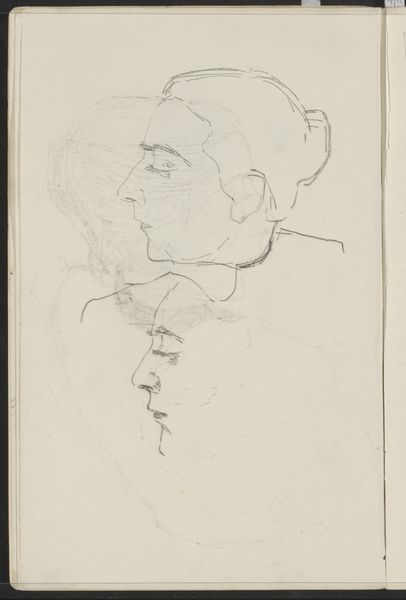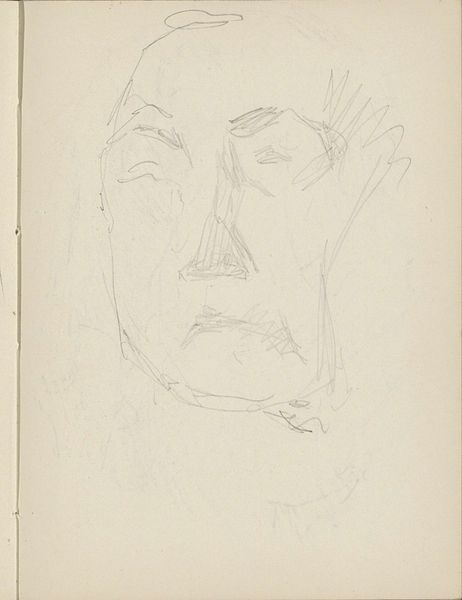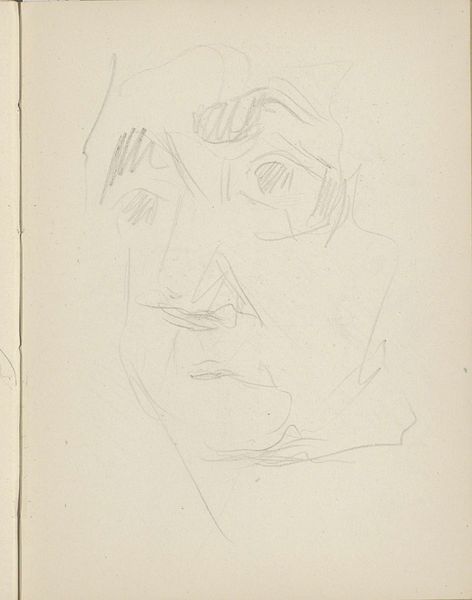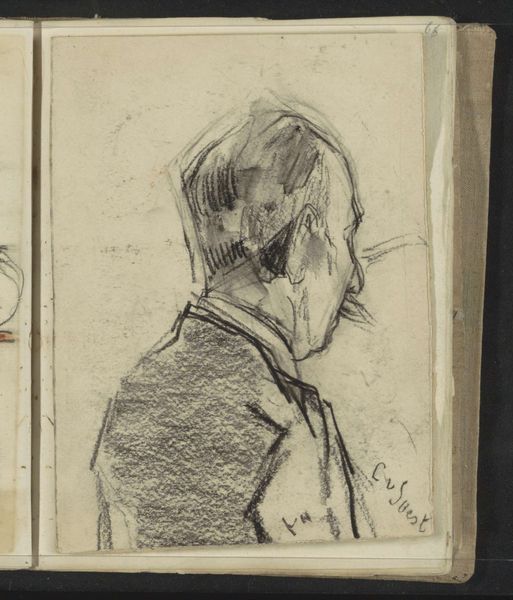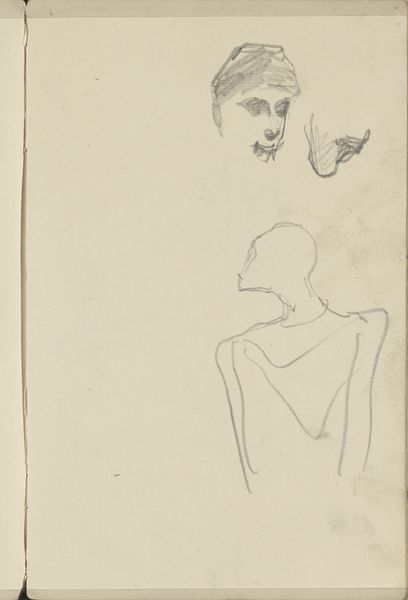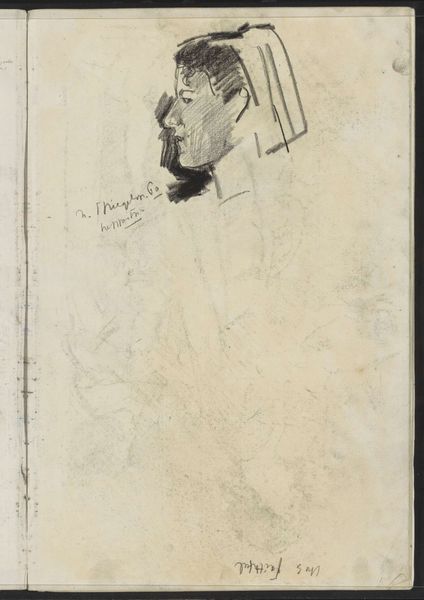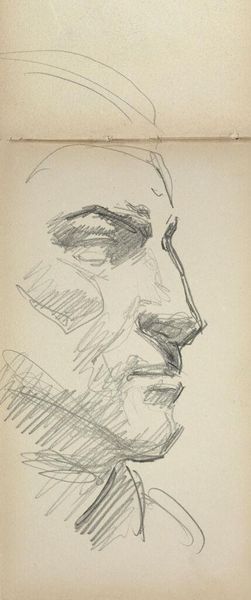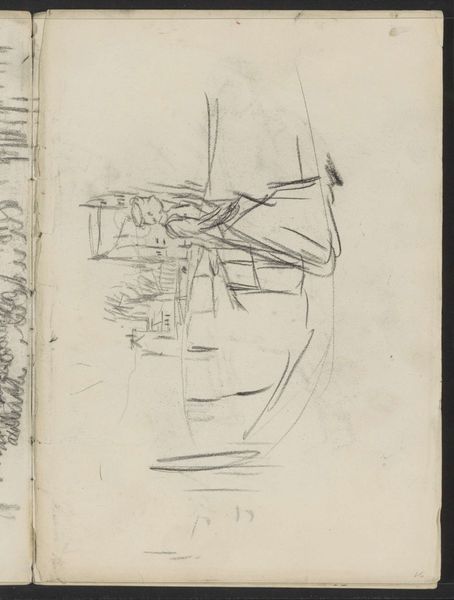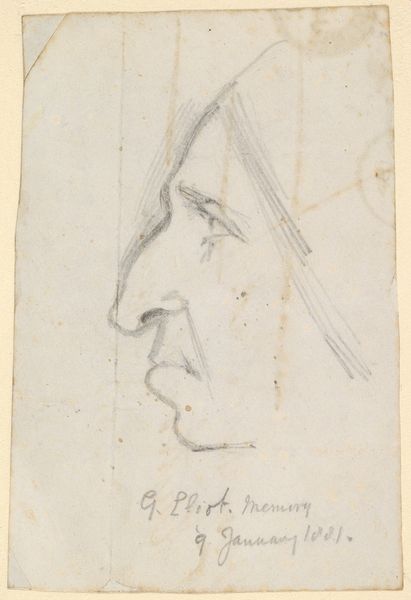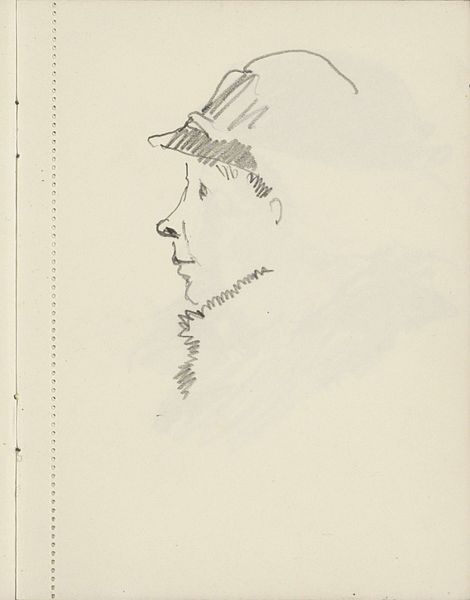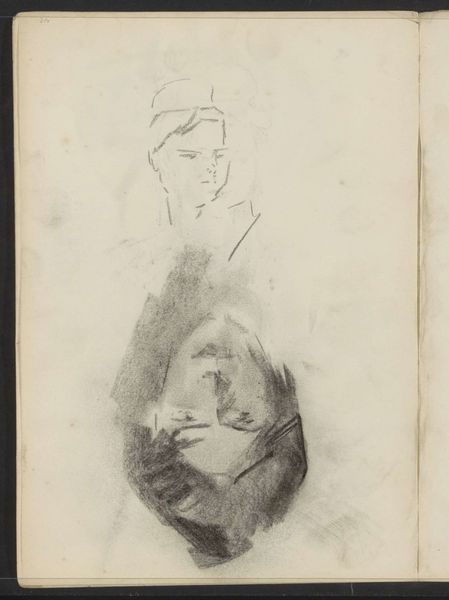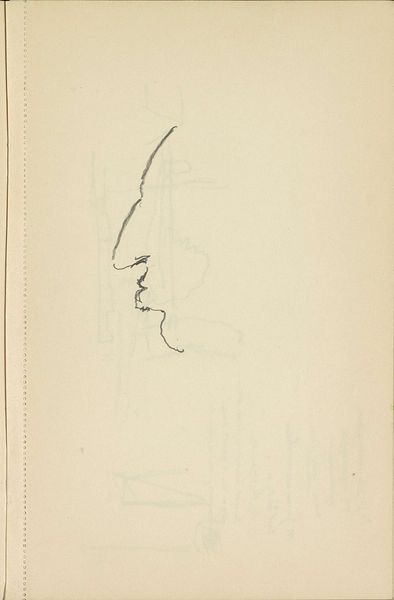
drawing, pencil
#
portrait
#
drawing
#
amateur sketch
#
light pencil work
#
self-portrait
#
quirky sketch
#
figuration
#
personal sketchbook
#
idea generation sketch
#
sketchwork
#
intimism
#
pen-ink sketch
#
pencil
#
line
#
sketchbook drawing
#
sketchbook art
#
initial sketch
Copyright: Rijks Museum: Open Domain
Curator: Immediately, I notice a vulnerability, a stark and fragile quality about it. Editor: Indeed. We’re looking at “Kop,” a pencil drawing by Carel Adolph Lion Cachet, dating from around 1897-1898. It’s held here at the Rijksmuseum. What strikes me is how quickly we tend to dismiss drawings as preliminary steps, rather than finished works in their own right. Curator: Precisely! And what story does the surface tell us? Look at the texture of the paper, the visible graphite smudges. These are all clues to how it was made, the artist’s hand at work, the materials consumed. It suggests immediacy. A thought captured. Editor: Yet this sketch, this "thought captured" as you call it, enters into a larger history of portraiture. How does a self-portrait such as this negotiate the relationship between the artist, the subject, and, of course, the marketplace? Whose gaze are we, the viewers, invited into? Is it one of introspection? Curator: More to the point, how accessible were these materials, who was encouraged to use them and in what contexts? Thinking about the production itself reframes our understanding of “fine art” practices. This pushes at established hierarchies within artistic training. Editor: True, but consider how Cachet's institutional training might have shaped his practice. Did formal conventions restrict his material explorations or, perhaps, ironically facilitate them? And what of its eventual public display and consumption in a museum, does that legitimize the "sketch" quality as artistic intent? Curator: Maybe it is legitimizing or maybe institutions just absorb what are always experiments, provisional activities that generate new approaches to representation that inevitably escape those conventional contexts. Editor: Fair enough. It highlights, then, the fluid relationship between art production, institutional framing, and how we, the public, understand something seemingly simple as a pencil drawing. Curator: Exactly, this artwork speaks to value, artistic labor, the lifecycle of materials and a challenge to static definitions. Editor: Thank you for reminding us to not overlook the subtleties of art. And also for reminding us of all the histories we can unveil.
Comments
No comments
Be the first to comment and join the conversation on the ultimate creative platform.
